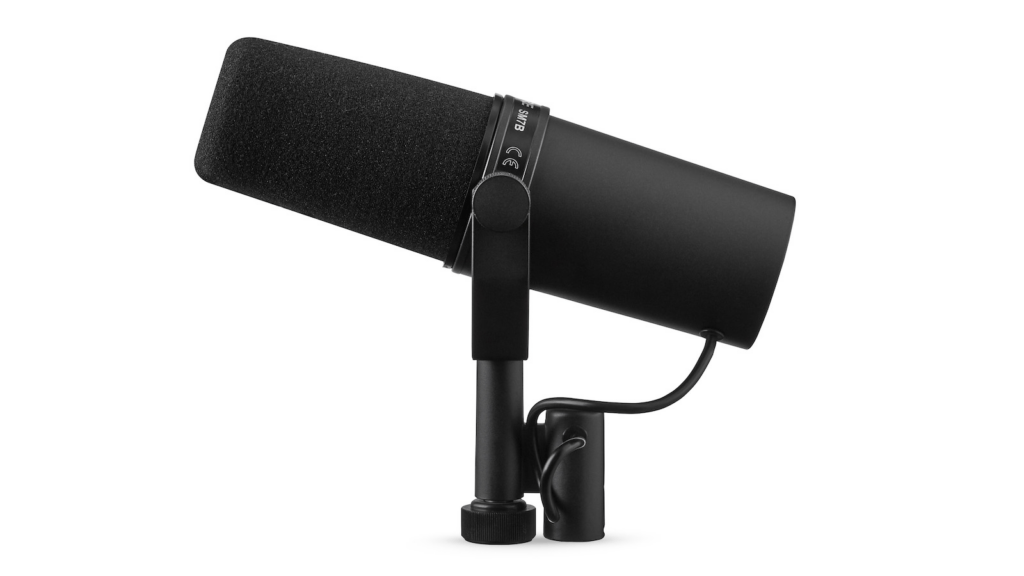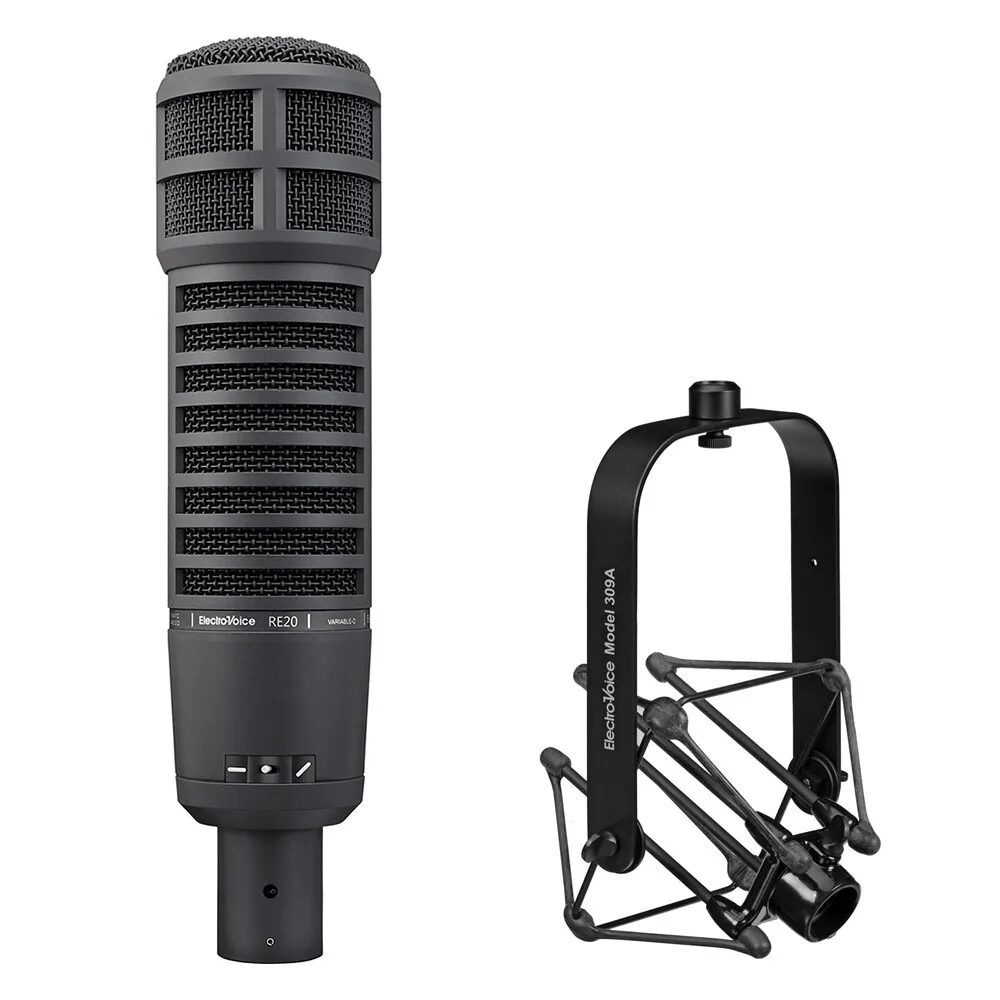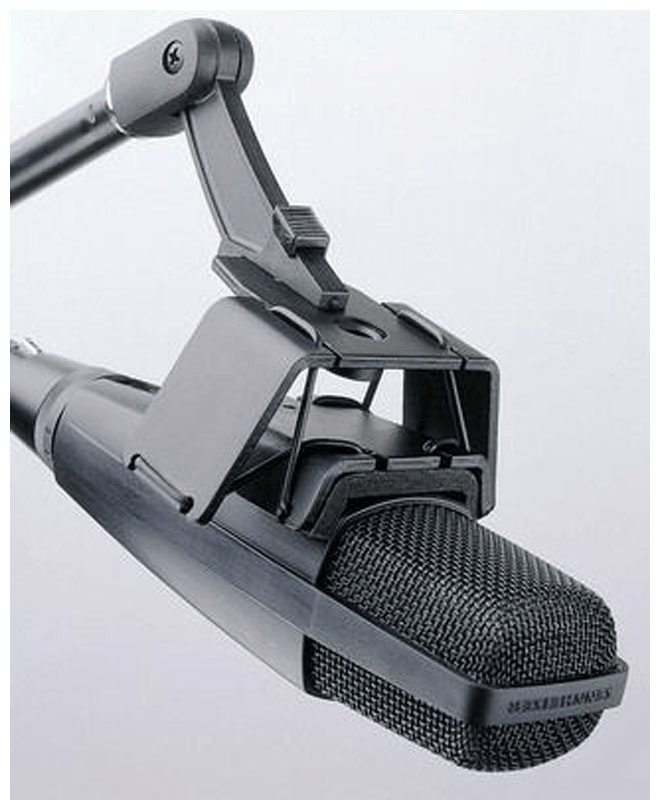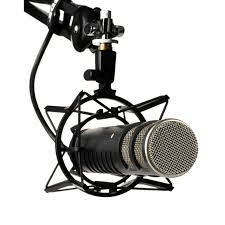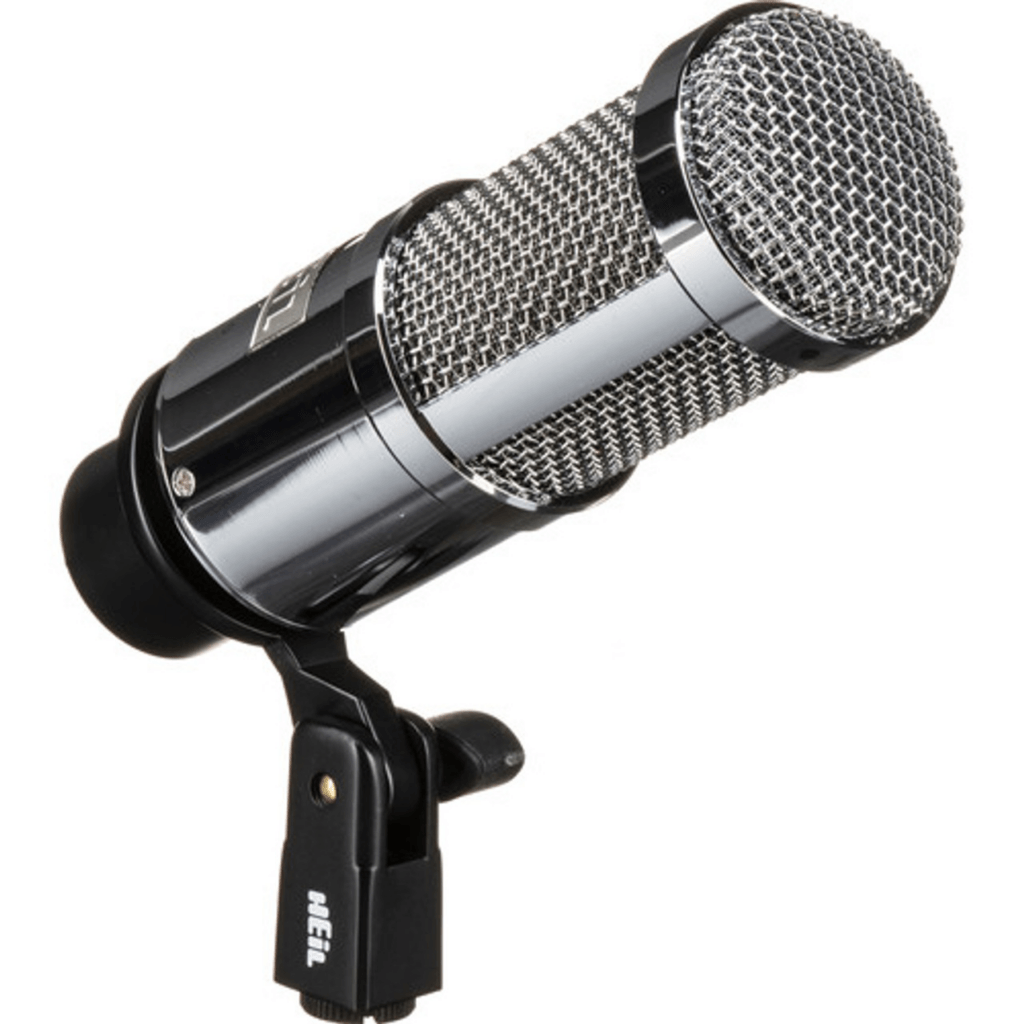Are you looking to capture crystal-clear vocals or record instruments in your home studio without the annoying buzz of background noise? The secret to that professional, studio-quality sound lies in finding the right dynamic microphone. These microphones are the go-to choice for their durability, versatility, and ability to excel in less-than-perfect acoustic environments. So, whether you’re laying down tracks, podcasting, or streaming, we’ve got you covered. Here’s a curated list of the best dynamic microphones that promise to elevate your home studio experience, balancing quality and affordability for both novices and seasoned audio enthusiasts. When selecting the best dynamic microphone for your home studio, consider these key criteria: Now let’s dive into the listicle review of the best dynamic microphones for your home studio. Price: Shown with dollar signs to reflect the general price range relative to each other. ($$$ = mid-range, $$$$ = high-end) Please note that these specifications are general and may not include all the detailed technical aspects of each microphone. It’s also wise to read reviews and test microphones when possible to get a sense of their sound quality and performance in your unique environment. The Shure SM7B is a legendary dynamic microphone that has found its way into the home studios of many podcasters, vocalists, and recording enthusiasts. With its sleek, industrial design, this microphone not only looks professional but delivers performance that can rival expensive studio gear. From the moment you unbox the SM7B, you’re greeted with its solid construction and the feeling that it can withstand the rigors of studio work. The built-in windscreen and the detachable A7WS windscreen give you flexibility for close-miked vocal applications, effectively reducing plosive sounds. Furthermore, its internal shock mount does a great job of minimizing the mechanical noises, which is a godsend for home studio owners who might not have perfectly acoustically treated rooms. Using the SM7B, you’ll notice it has a flat, wide-range frequency response that preserves the natural beauty of the spoken word and performs just as admirably with singing. It harbors a smooth and controlled capture of audio with a rich warmth that is pleasing to the ear. This microphone shines when it comes to its ability to reject electromagnetic hum caused by computer monitors, neon lights, and other studio equipment, thanks to its humbucking coil. One of the most praised aspects of the SM7B is its versatility. Whether you are a podcaster, a streamer, a musician, or a voice-over artist, this microphone seems to adapt and testament to its performance across various applications is quite evident in its widespread use. Specs Pros: Cons: Price The Shure SM7B usually comes in at around $400. Although this may seem steep for the budding home studio enthusiast, the investment speaks for itself when you hear the audio purity and professional sound quality. Personal Opinion The Shure SM7B has earned its reputation in the recording industry for good reason. While testing this microphone in my home studio, I was consistently impressed by the clarity and warmth it captured, whether recording spoken word or vocals. It’s remarkably forgiving and flattering to the voice, which isn’t something every microphone can claim. However, I want to stress that to truly appreciate what the SM7B offers, you’ll need a solid preamp or audio interface that can provide the gain it requires without introducing unwanted noise. When you meet its needs, it proves itself as an investment that can elevate your home studio to near-professional levels. It’s not an entry-level microphone, and its cost reflects that. For those ready to step up their audio game and looking for a microphone that can potentially stay with them throughout their sonic journey, the SM7B is a choice you’re unlikely to regret. The Electro-Voice RE20 is a professional-grade dynamic microphone with a rich history in broadcast and recording. Beloved by broadcasters and musicians alike, it has formed a reputation for its ability to handle a wide variety of voices and instruments with ease. Its unmistakable design, characterized by its Variable-D technology to control the proximity effect, ensures that the audio is smooth and consistent regardless of distance from the source. This microphone shines due to its cardioid polar pattern, which effectively isolates the sound source while rejecting unwanted ambient noise—essential for any home studio environment. It also boasts a built-in pop filter, which is a dream come true for podcasters and vocalists looking to capture clear speech without frustrating plosives. The Electro-Voice RE20 has a warm and round sound that flatters both spoken word and vocal performances, as well as an ability to tame harsh frequencies of instruments like brass and electric guitar. From my experience, the RE20 presents an exceptionally natural sound. It’s forgiving with less-than-perfect room acoustics, a common challenge in home studios. Its durability is also noteworthy—I’ve known these mics to last for decades, still delivering excellent sound quality. Specs: Pros: Cons: Price: At the time of this review, the Electro-Voice RE20 typically retails around $450. This places it in the higher echelon of dynamic microphones in terms of cost. However, taking into account its professional broadcast quality and versatility, many users find the investment to be justified, especially considering its longevity. The Sennheiser MD 421-II is a microphone steeped in a rich legacy, evidencing its durability and adaptability across various recording scenarios. Renowned for its clear sound and versatility, the MD 421-II stands out as an exceptional dynamic mic that can handle everything from vocals to instruments, making it an ideal addition to any home studio. Initially, what I noticed when unpacking this microphone was its robust build, reassuringly indicative of Sennheiser’s quality in design. Utilizing it in multiple sessions, the MD 421-II proved to be outstanding at capturing both the warmth and the intricate details of vocal performances. It’s an all-rounder that proficiently tackles loud sound sources such as guitar cabinets and drums, thanks to its five-position bass roll-off switch which helps in tailoring the sound capture to perfection. Specs: Pros: Cons: Price: While prices can fluctuate, you can expect to invest around $380 for the Sennheiser MD 421-II. This places it at a mid to high-end price point. Considering its sound quality and versatility, it certainly delivers value for the investment, making it a sensible purchase for those seeking a workhorse dynamic microphone for their home studio. The MD 421-II is a classic for a reason – it’s a reliable microphone that’s likely to serve you well across a multitude of recording situations. Overview: From my experience with the Procaster, it offers an exceptional balance of quality and ease of use. Its tailored-for-voice frequency response ensures that your recordings will have that rich, broadcast tone that’s so highly sought after. The Procaster also excels in rejecting ambient noise, which is crucial in less-than-ideal recording environments commonly found in home setups. One standout feature is its internal pop filter, which effectively reduces plosive sounds that can otherwise compromise your recording quality. Specs: Pros: Cons: Price: In conclusion, the Rode Procaster is a standout choice for a home studio dynamic microphone, offering professional-level performance at a price that won’t break the bank. It’s a workhorse that combines quality audio with durable craftsmanship, ideal for any home recording artist looking to step up their audio game. The Heil Sound PR-40 is a dynamic microphone that packs a lot of punch, making it an ideal companion for your home studio adventures. Upon first glance, its sleek and professional design is sure to make you do a double-take. But it’s not just about looks with the PR-40 – this mic is here to deliver performance that can easily rival its competitors. Upon plugging it in, you’re greeted by one of the most natural and smooth sounds a dynamic microphone could offer. It’s crisp and clear, with a cardioid pickup pattern that keeps unwanted room noise at bay. Although primarily advertised for its excellence in broadcasting and podcasting, don’t be fooled; this microphone holds its own like a rockstar when it comes to recording music. Vocalists and instrumentalists alike will benefit from its wide frequency response. The Heil PR-40 showcases durable construction and boasts an internal shock mount that effectively dampens any mechanical noise. This means less hassle for you in post-production trying to clean up your tracks. But what truly stands out to me about this mic is the ability to maintain clarity across different sound sources, making it versatile for various home studio applications. Specs: Pros: Cons: Price: At the time of review, the Heil Sound PR-40 sits in the mid to high-end price range for dynamic microphones suited for home studios. The investment is well worth it for the serious home studio enthusiast who values audio quality and build. Keep an eye out for deals, but expect to pay a price that matches its professional-grade performance. In conclusion, the Heil Sound PR-40 isn’t just another microphone in a crowded market; it’s the microphone that could elevate your home studio to professional heights. Its strength lies in capturing the organic texture of vocals and instruments, a characteristic that’s often lost in cheaper models. If you’re looking to invest in sound quality without the complexities that condenser mics bring to the table, the PR-40 could be your studio cornerstone for years to come. In the quest for the perfect home studio sound, a top-notch dynamic microphone stands as an indispensable tool. Our curated list highlights models that cater to both budding musicians and seasoned podcasters, ensuring quality recordings without breaking the bank. Remember, the best mic for you depends on your unique needs—from vocal clarity to instrument compatibility. Happy recording! Q: Why choose a dynamic microphone for a home studio? Q: Can dynamic microphones be used for both vocals and instruments? Q: Do I need additional equipment to use a dynamic microphone in a home studio? High Speed 6PIN Female Connecor for Cable,High Speed GT32 4 PIN Female Connector,High Speed Connetor Dongguan Zhuoyuexin Automotive Electronics Co.,Ltd , https://www.zyx-fakra.com
Specification Shure SM7B Electro-Voice RE20 Sennheiser MD 421-II Rode Procaster Heil Sound PR-40 Price $$$$ $$$$ $$$ $$$ $$$ Pickup Pattern Cardioid Cardioid Cardioid Cardioid Cardioid Frequency Response 50Hz – 20kHz 45Hz – 18kHz 30Hz – 17kHz 75Hz – 18kHz 28Hz – 18kHz Impedance 150 Ohms 150 Ohms 200 Ohms 320 Ohms 375 Ohms Sensitivity -59.0 dB -56.0 dB -2 dBv/pa -56.0 dB -53.9 dB Connector XLR XLR XLR XLR XLR Weight 765.4 grams 737 grams 385 grams 745 grams 368 grams Built-in Pop Filter Yes No No Yes No Accessories Included Windscreen, Mount Mount Microphone Clamp Mount, Zip Pouch Mount Shure SM7B
Electro-Voice RE20 Dynamic Microphone
Sennheiser MD 421-II
Sure! Let’s get into the details of the Rode Procaster Dynamic Microphone.Rode Procaster
The Rode Procaster is a professional-grade dynamic microphone designed with the home studio enthusiast in mind. Right out of the box, it’s clear that Rode has paid particular attention to the needs of podcasters, broadcasters, and vocal artists who require robust performance without the acoustic treatment of professional studios.
While I won’t dive deep into technical specifications, I will note the Procaster has an end-address configuration, meaning you speak into the end of the microphone rather than the side. It’s quite durable, thanks to its all-metal construction, and includes features that contribute to its noise rejection capabilities, such as an internal shock mounting system.
As for the price tag, the Rode Procaster falls into the mid-range category. It’s not exactly cheap, but considering the professional sound quality it provides, you’re getting a lot of bang for your buck. It strikes an excellent balance between performance and cost, making it a smart investment for someone who is serious about their home studio but not looking to spend professional studio prices.Heil Sound PR-40
Conclusion:
FAQs:
A: Dynamic microphones are renowned for their durability, affordability, and ability to handle high sound pressure levels, making them ideal for a wide range of home studio applications.
A: Yes, dynamic microphones are versatile and can capture both vocals and various instruments with excellent sound fidelity, though some models may be better suited for specific applications.
A: You may need a stand, an XLR cable, and an audio interface or mixer to connect your dynamic microphone to your computer for recording. Some dynamic mics come with necessary accessories, so check product specifications.
